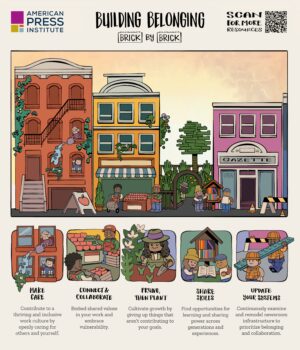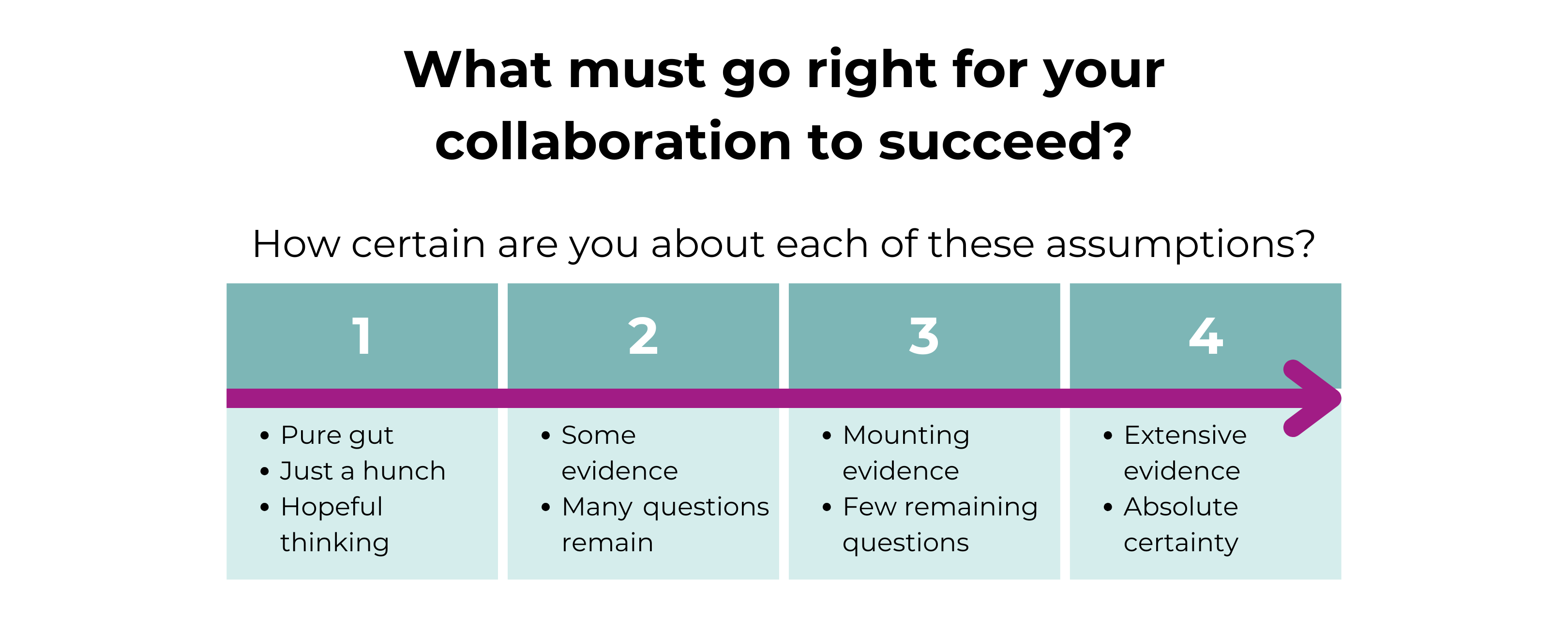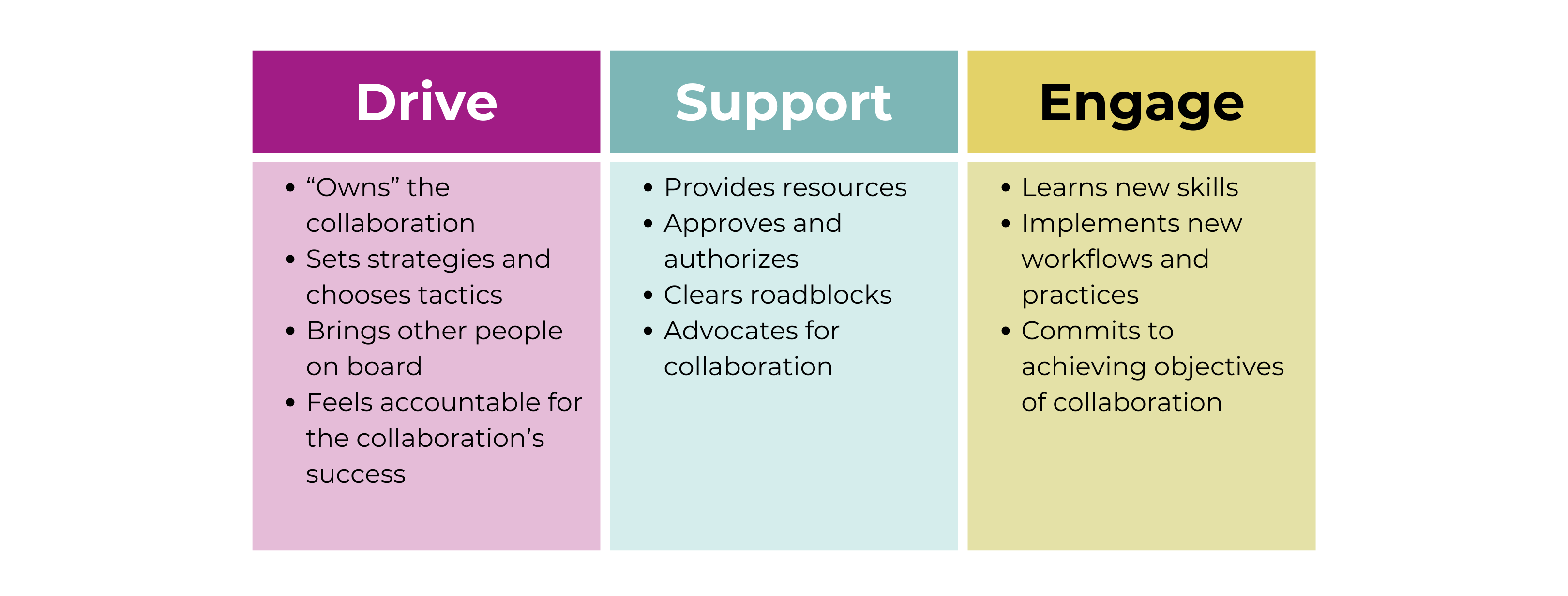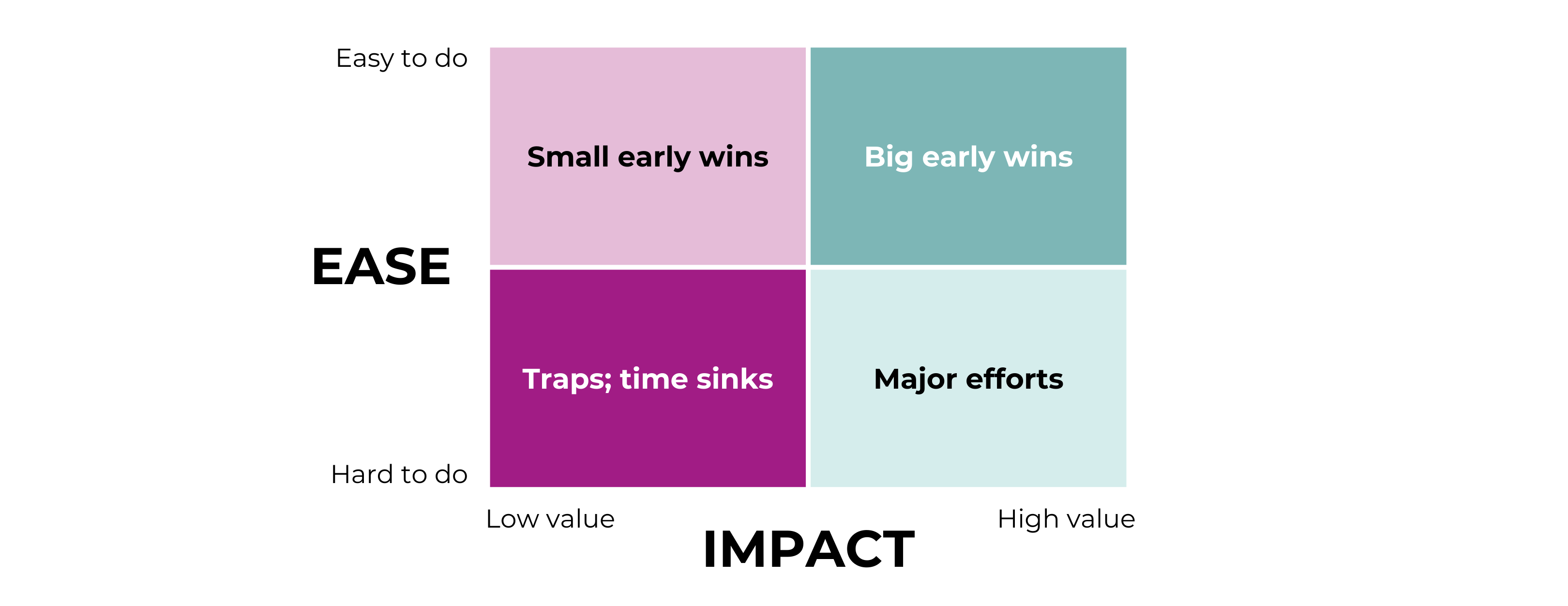5 frameworks to help improve collaboration in news organizations
Emily Ristow, American Press Institute,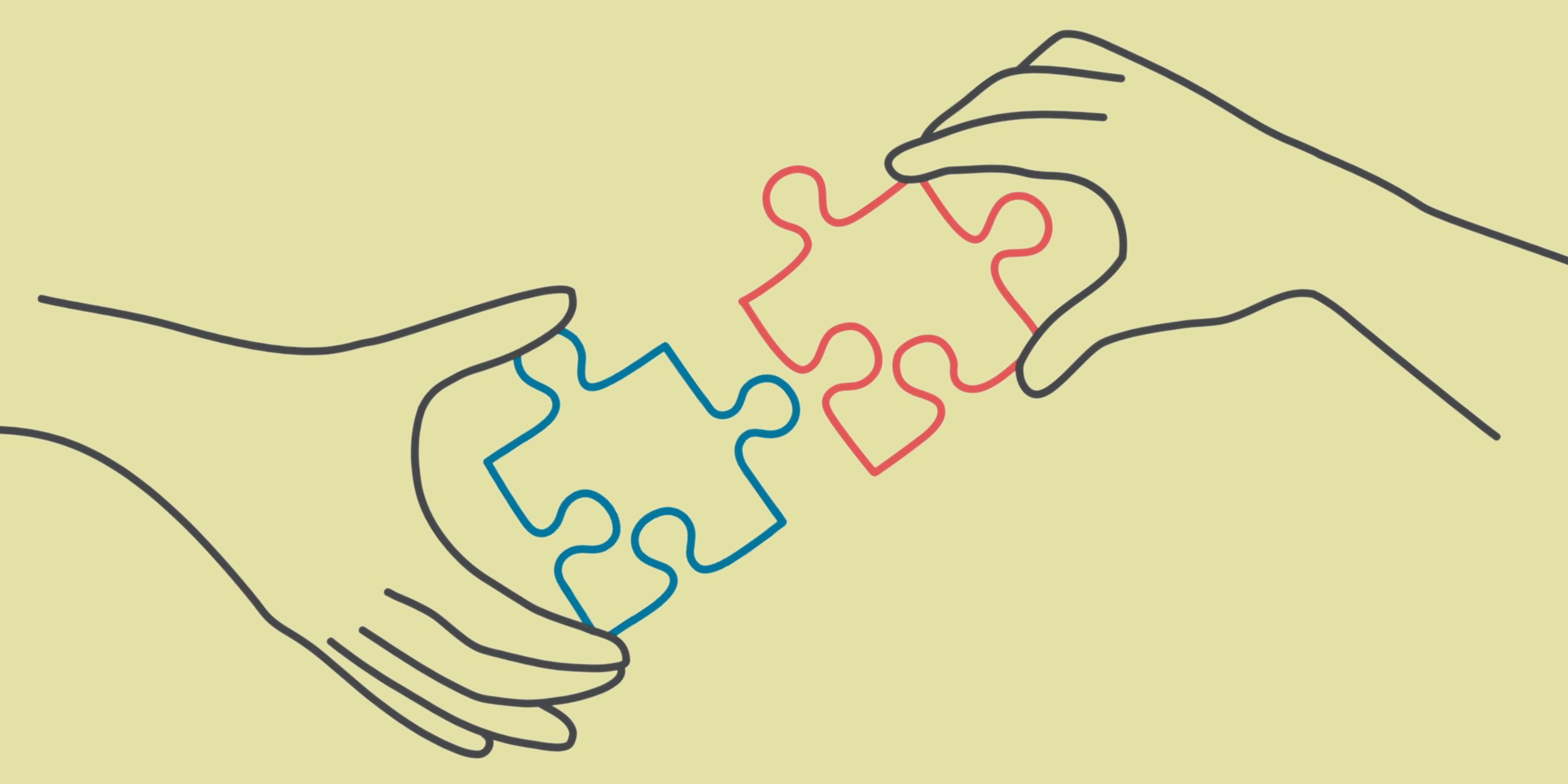 Here are 5 ideas to steal and adapt: Use these tools of performance-driven change to work better together.
Here are 5 ideas to steal and adapt: Use these tools of performance-driven change to work better together. This is a series on Better News to a) showcase innovative/experimental ideas that emerge from the Knight-Lenfest Newsroom Initiative and b) share replicable tactics that benefit the news industry as a whole.
These tips come from Emily Ristow, director of local news transformation at the American Press Institute, where she manages the Table Stakes Local News Transformation Program. Ristow also participated in the Major Market Table Stakes program in 2017 with the Milwaukee Journal Sentinel and was a coach in the Gannett-McClatchy Table Stakes program in 2019-20.
The inspiration for this piece was a two-day API Local News Summit in July 2024 in Minneapolis that brought together news leaders from Table Stakes alumni organizations with the goal of better fostering belonging and collaboration. The tools mentioned in this piece are used in Table Stakes programs.
As newsrooms face shrinking resources, intersectional communities and generational differences, collaboration that energizes instead of drains teams is critical to the local news mission of meeting community needs.
With that in mind, the American Press Institute gathered more than 60 news leaders and experts from outside journalism to explore solutions for fostering belonging and collaboration in local news organizations. The API Local News Summit for Table Stakes Alumni was held in July 2024 in Minneapolis.
Most of the organizations represented were alumni of the Table Stakes Local News Transformation Program. In this yearlong change management program, they learned the table stakes, key digital skills needed for news publishers to thrive in the digital era and the tools of Performance Driven Change. Both the table stakes and the Performance Driven Change tools were developed by Douglas K. Smith, who is also the founder of the Media Transformation Challenge program built around this intellectual property.
Here are five frameworks from the program that can help you improve collaboration in your news organization:
1. From>To Statements
It’s important to have a shared vision when it comes to collaboration. From>to statements allow your team to describe your existing conditions and define your ideal future conditions. This puts into writing how you will recognize change has occurred and your collaborative efforts have improved.
For example, when thinking about your news organization’s collaborative efforts as a whole, a from>to statement might be:
From scattered attempts at collaborating on projects, with the same key stakeholders pitching ideas and involved in efforts To structure that provides an equal playing field for pitching collaborative project ideas and allows anyone to join efforts
Tip: Push beyond broad generalities and think of observable conditions as you craft your from>to statements. Use descriptive, visceral and meaningful language to bring the statements to life.
2. Activities vs. Outcomes
Goals are also key for strong collaborations. After all, you want to ensure you’re effective, right? When setting goals, be sure you’re focusing on outcomes and impacts, rather than rewarding yourself for ticking tasks off a list or completing activities.
Outcomes or impacts speak to how you’ll know your collaboration was successful. Perhaps you’d like to publish a project that converts subscribers or donors or one that’s consumed by community members not already familiar with your work. Maybe you have an organizational goal such as a collaborative project fostering a stronger sense of belonging.
There are crucial things you need to do in service of those outcomes or impacts. For example:
- Publishing the project and accompanying promotion — outputs
- Meeting as a team, reporting, and writing or recording the project — all activities
Outputs and activities are necessary for success, but doing those things alone does not mean you were successful. To define success, set goals around outcomes and impacts.
Tip: Watch for “feigned” and “compliance” outcomes. Quantifying an activity (e.g., “We will publish five stories”) doesn’t make it an outcome.
3. Assumptions to Knowledge
We all come into new situations with assumptions. Be clear about what you actually know and what’s just a hunch. Rather than listing potential problems or roadblocks, list what must go right for your collaboration to succeed. What are you assuming will be true about your team members, your technology systems, other resources, outside partners, your audiences, etc.?
Flare broadly to capture as many assumptions around as many factors as possible, and then focus on a few key assumptions most integral to your collaboration’s success. Now assign each key assumption a rating of 1 to 4, with 1 being pure gut/just a hunch and 4 being you have extensive evidence showing this statement is true.
Return to this list of assumptions regularly and re-evaluate it as a team. This will help you recognize if and when a pivot is needed. You will be forced to confront (rather than overlook or even willfully ignore) mounting evidence that the collaboration will not succeed as currently designed.
Tip: When crafting your initial assumptions and regularly re-evaluating them, include multiple perspectives for the most accurate reading. And don’t be too hard on yourself if many of your assumptions initially rate a 1 or 2; higher ratings at the start indicate you’re not being innovative and instead are going forward with “business as usual.”
4. Constituency Maps
The constituency map is one framework for assigning roles and responsibilities for your collaboration. It can also help you mentally rehearse the collaboration by identifying who needs to be involved, assigning roles and imagining what will be required for a successful project.
It can also help you be proactive vs. reactive when building out your team. Not every possible person-related need or issue can be identified in advance, but you can get ahead of most of them and avoid situations like “we forgot to include this person and now we’re stuck.”
Additionally, pay attention to who you’re including and who you’re leaving out, and recognize that including team members with diverse experiences and skill sets will benefit your collaborative efforts.
Tip: Be aware of people who are assigned to every category. It shows you haven’t thought things through and remain uncertain about what’s really needed from each person for the collaboration.
5. Ease/Impact Matrix
There’s no reason to start with the most challenging collaboration. Get some experience working together by plotting your collaborative ideas on the ease/impact matrix and starting with something that is easier to do but still has high impact. From there, you can level up to more difficult — and still impactful — collaborative efforts.
Tip: The Ease/Impact Matrix can also be used to help you decide what to stop doing. Instead of plotting new ideas on the matrix, plot your recurring task. What things are hard to do but offer little impact? Those are things you should look to give up in factor of higher impact work.
